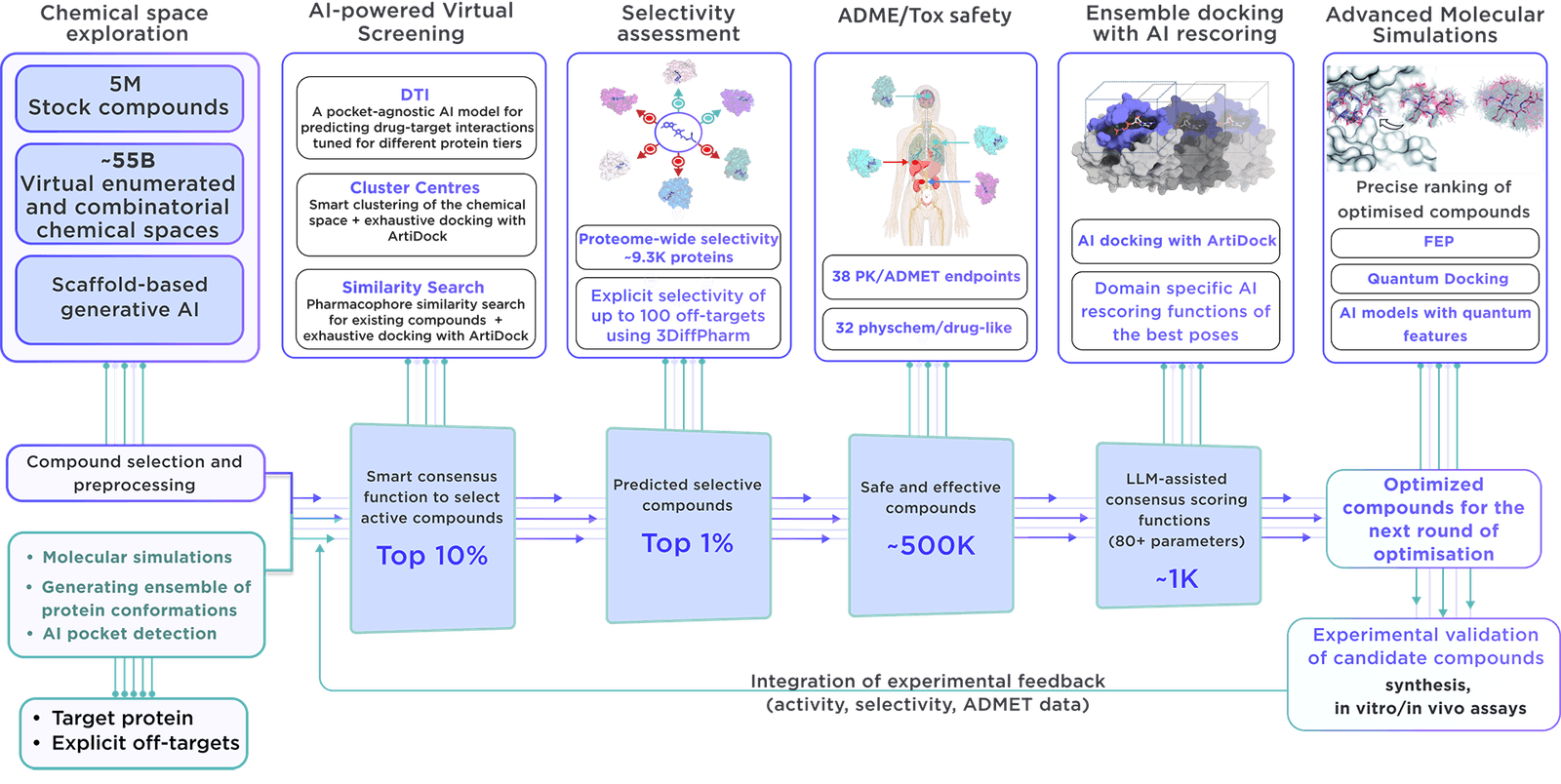Focused On-demand Libraries - Receptor.AI Collaboration
Explore the Potential with AI-Driven Innovation
The focused library is created on demand with the latest virtual screening and parameter assessment technology, supported by the Receptor.AI drug discovery platform. This method is more effective than traditional methods and results in higher-quality compounds with better activity, selectivity, and safety.
From a virtual chemical space containing more than 60 billion molecules, we precisely choose certain compounds. Reaxense aids in their synthesis and provision.
Contained in the library are leading modulators, each labelled with 38 ADME-Tox and 32 physicochemical and drug-likeness qualities. In addition, each compound is illustrated with its optimal docking poses, affinity scores, and activity scores, giving a complete picture.
We utilise our cutting-edge, exclusive workflow to develop focused libraries for enzymes.
The method includes detailed molecular simulations of the catalytic and allosteric binding pockets, along with ensemble virtual screening that considers their conformational flexibility. In the design of modulators, structural changes induced by reaction intermediates are taken into account to enhance activity and selectivity.
Key features that set our library apart include:
- The Receptor.AI platform integrates extensive information about the target protein, such as historical experiments, academic research, known ligands, and structural insights, thereby increasing the likelihood of identifying highly relevant compounds.
- The platform’s sophisticated molecular simulations are designed to discover potential binding sites, ensuring that our focused library is optimal for the discovery of allosteric inhibitors and binders for cryptic pockets.
- With over 50 customisable AI models, verified through extensive testing in commercial drug discovery and research, Receptor.AI is efficient, reliable, and precise. These models are essential in the production of our focused libraries.
- Receptor.AI not only produces focused libraries but also provides full services and solutions at every stage of preclinical drug discovery, with a success-based pricing structure that aligns our interests with the success of your project.
Receptor.AI
Q9UMS4
UPID:
PRP19_HUMAN
ALTERNATIVE NAMES:
Nuclear matrix protein 200; PRP19/PSO4 homolog; RING-type E3 ubiquitin transferase PRP19; Senescence evasion factor
ALTERNATIVE UPACC:
Q9UMS4

